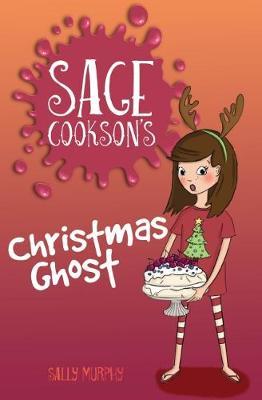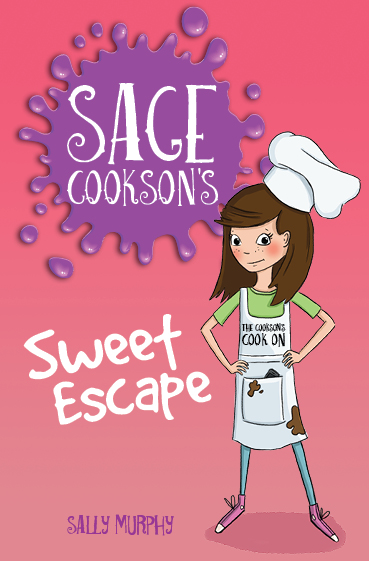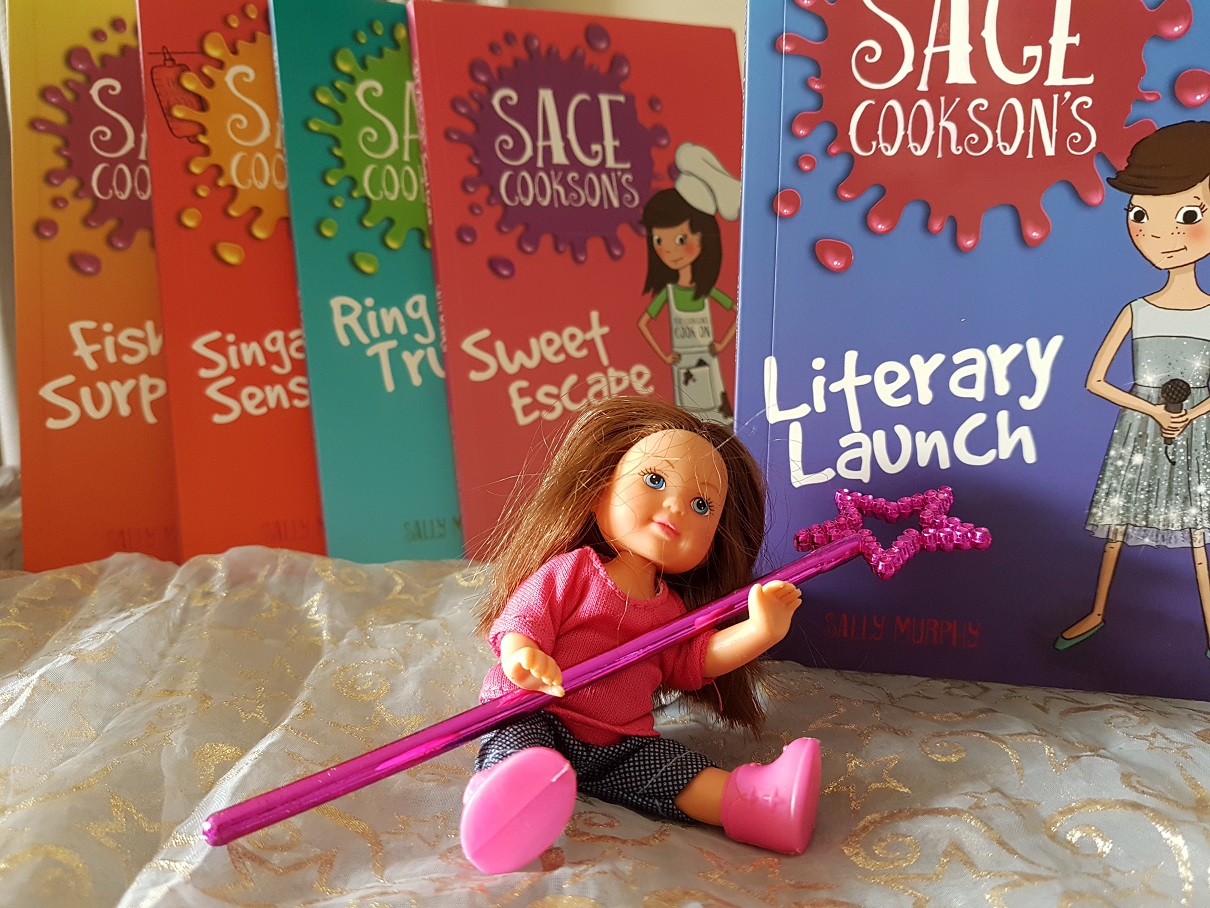Welcome to the ninth edition of Teacher Tuesday, where I match one of my books to a year level, and offer some activities for sharing the book in the classroom. In previous weeks I shared activities for Pearl Verses the World, Looking Up, Toppling, Roses are Blue, Do Not Forget Australia, Meet Mary MacKillop, Snowy’s Christmas and The Floatingest Frog.
This week, I am focusing on the Sage Cookson series. There are now six books in the series, including  the newly released Sage Cookson’s Christmas Ghost. At this stage in the school year, sharing some short, unchallenging chapter books is a great way to keep kids reading – and writing. And, with recipes included and the potential for simple Christmas crafts, you can craft lots of varied lessons.
the newly released Sage Cookson’s Christmas Ghost. At this stage in the school year, sharing some short, unchallenging chapter books is a great way to keep kids reading – and writing. And, with recipes included and the potential for simple Christmas crafts, you can craft lots of varied lessons.
Using Sage Cookson in a Year Three Classroom
Sage Cookson Series (Sweet Escape, Ring of Truth, Fishy Surprise, Singapore Sensation, Literary Launch and Christmas Ghost, by Sally Murphy
Published by New Frontier Publishing
Format: Paperback chapter books, RRP $9.99
Blurb: Sage Cookson is a ten year old with a pretty different lifestyle. Her parents are television chefs with, unsurprisingly, a passion for food. They spend a lot of their time travelling Australia and the world sampling the food, learning new cooking techniques and then sharing their new knowledge with their massive television audience. For Sage, this means she gets to embark on adventurous travels with her parents.
Sally’s Recommended Grade Levels: Year 1 – year 5 but these suggestions focus on Year 3.
Themes/Topics:
- Cooking/Food
- Travel
- Adventure
- Friendship
- Resilience
- Mystery
Dedicated website with activities, recipes and sample chapters HERE.
Curriculum Links:
The following ideas link the enjoyment and exploration of Sage’s adventures with learning requirements of the Geography strand of the HASS Curriculum.
Year 3 English and HASS
1.Discuss how language is used to describe the settings in texts, and explore how the settings shape the events and influence the mood of the narrative (ACELT1599).
- This activity uses the first book of the series Sage Cookson’s Sweet Escape. This book can be shared as a read-aloud over a few sessions.
- During or after reading, focus on the description of setting on page 8, page 26 and page 27-28. As a
 class or in groups, identify words used to describe the setting. Discuss what mood these words evoke. How do these words echo what is happening in the story, and Sage’s feelings?
class or in groups, identify words used to describe the setting. Discuss what mood these words evoke. How do these words echo what is happening in the story, and Sage’s feelings? - Activity: Have students write two descriptions of a familiar setting (eg the classroom/their bedroom/ a shopping centre), evoking two different moods in the same setting.
- Create Word Bank Posters for classroom display boards. As students read other books in the series, have them add words describing settings to the word banks. Word banks can be themed by mood – eg happy, exciting, fun, scary or by location – inside, built environments, beach, nature etc.
2.The location of Australia’s neighbouring countries and the diverse characteristics of their places (ACHASSK067)
- The similarities and differences between places in terms of their type of settlement, demographic characteristics and the lives of the people who live there, and people’s perceptions of these places(ACHASSK069)
- Plan, draft and publish imaginative, informative and persuasive texts demonstrating increasing control over textstructures and language featuresand selecting print ,and multimodal elements appropriate to the audience and purpose (ACELY1682)
- Use the remainder of the Sage series to discuss travel to other states and countries. Read back of book blurbs and try to identify where each book is set. Use a map to identify which parts of Australia/the world the books are set in. Discuss the use of a food item or group in each book. Have students predict which food might be featured in each book, and discuss which foods are closely tied to the places Sage visits (eg fish at a coastal setting) and which could be connected to other places (eg chocolate in SW Western Australia) .
- Ask students to contribute places they have visited, or lived, or that family members are from. Locate on the world map, and brainstorm what class members know about the place.
- Students to choose one town/city they have not visited and research: location, climate, languages spoken, population, geographical features, cusine etc. This could be a short task, with oral reports, or be used as a report-writing or multimedia task, depending on your time availability and other objectives.
- Creative writing task. Students to plan and write a new story featuring Sage Cookson travelling to the place they have researched. Guiding questions for planning: how would Sage and her parents travel there? What kinds of food might they be researching? What could go wrong in that location?
Other suggestions for using Sage Cookson books in your classroom include:
- Each book includes a back of book recipe. Using these as examples, discuss the elements of a recipe. As a class, compose a recipe for a good narrative. What ingredients should a narrative have? What steps should you follow?
- Art and craft: Make a chef hat. Instructions are on the Sage Cookson website here.
- Email the author (that’s me!) Your students can write to me through this website, and share their responses or ask questions.
Related Books
- Do Not Forget Australia, by Sally Murphy (contrast in travel in 1918 and now)
- Dork Diaries, by Rachel Renee Russell
- WeirDo, by Anh Do
- Geronimo Stilton Series
Mostly, I’d love to remind you that while I love to see my books used in classrooms, I also love to see kids just enjoying them. Reading a book should be pleasurable – whether it’s being used in the classroom or not. So allow your students to enjoy reading the Sage Cookson series.
If you find this useful, or have any suggestions or comments, do leave a comment. And, if there is a particular book or year level or topic that you would like covered in a future edition of Teacher Tuesday, let me know.